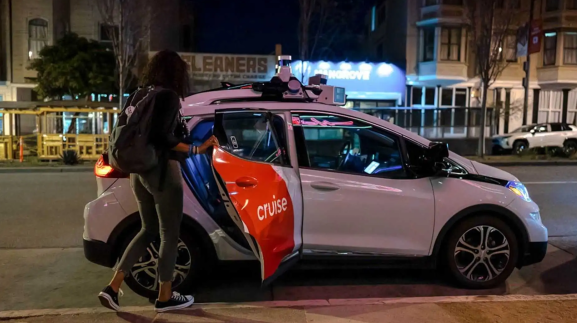
Recently, a Cruise self-driving car crashed in San Francisco, USA, which once again raised concerns about the safety of self-driving technology. Although self-driving cars are gradually being integrated into real life as a development achievement of technology, their safety issues are still of great concern.
It is understood that the accident occurred at 10 pm local time on August 17, Cruise self-driving car Collision with a fire truck at the intersection of Polk and Turk streets in San Francisco. Cruise said the vehicle entered the intersection when the light turned green but failed to yield to a fire truck with lights and siren on, causing the collision. The accident caused damage to the right side of the Cruise car and the passenger was injured and sent to the hospital. Currently, Cruise is cooperating with the San Francisco City Government to investigate the cause of the accident.

According to the editor’s understanding, this accident has raised concerns about the safety of self-driving cars, especially whether self-driving cars can accurately identify themselves in emergencies. and respond to their surroundings. In fact, this is not the first time Cruise’s self-driving cars have had problems in San Francisco. A week before the accident, the city of San Francisco approved two companies, Cruise and Waymo, to operate 24-hour self-driving cars in the city. However, the day after the permit was granted, 10 Cruise self-driving cars blocked Grant Street due to wireless connection issues, causing traffic to be disrupted for 20 minutes. A few days later, another Cruise self-driving car accidentally entered the construction site on Golden Gate Street and became stuck in wet concrete. In response, San Francisco Fire Chief Jeanine Nicholson expressed serious concerns. She pointed out that autonomous vehicles have interfered with emergency rescue operations on multiple occasions, including blocking roads, blocking fire station entrances, and crossing warning lines. She called on self-driving car companies and city governments to strengthen supervision and communication to ensure public safety.
To resolve the issue, the California Department of Motor Vehicles (DMV) said Cruise has agreed to reduce the number of its driverless taxi operations by 50% pending the DMV completing its investigation into recent accidents involving Cruise vehicles. . According to a statement from the DMV, no more than 50 driverless vehicles will operate during the day and no more than 150 driverless vehicles will operate at night. This initiative is aimed at ensuring the safe operation of autonomous vehicles. Although autonomous driving technology continues to advance, efforts still need to be strengthened to ensure public safety.
The above is the detailed content of San Francisco self-driving car crash raises concerns: Cruise vehicle collides with fire truck. For more information, please follow other related articles on the PHP Chinese website!
 Ubuntu startup black screen solution
Ubuntu startup black screen solution
 c language else if statement usage
c language else if statement usage
 unicode to Chinese
unicode to Chinese
 Solution to java report that build path entries are empty
Solution to java report that build path entries are empty
 What is the customer service phone number of Meituan Food Delivery?
What is the customer service phone number of Meituan Food Delivery?
 Garbled characters starting with ^quxjg$c
Garbled characters starting with ^quxjg$c
 What is the shortcut key for copying and pasting ctrl?
What is the shortcut key for copying and pasting ctrl?
 How to calculate the factorial of a number in python
How to calculate the factorial of a number in python




